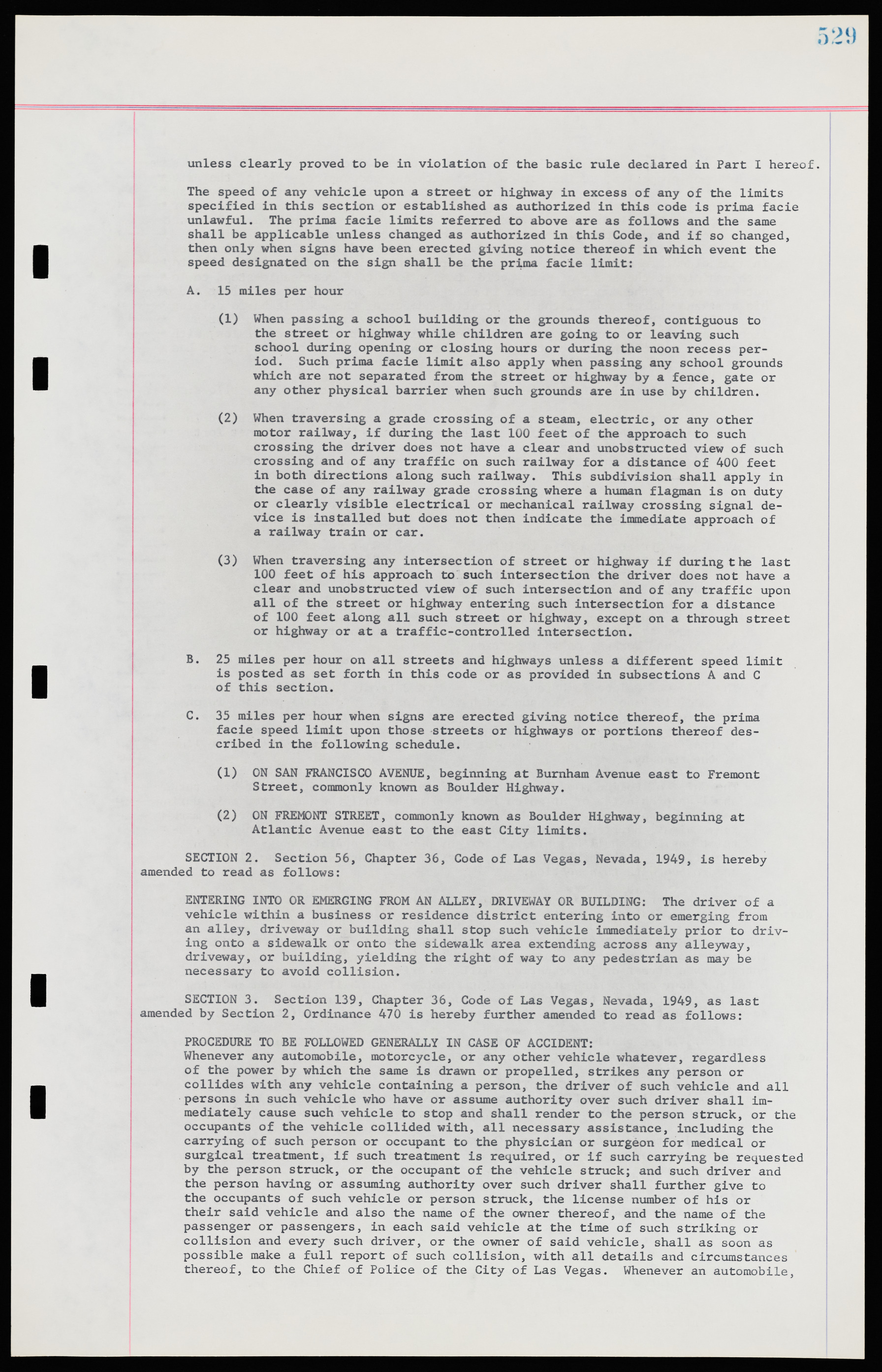Copyright & Fair-use Agreement
UNLV Special Collections provides copies of materials to facilitate private study, scholarship, or research. Material not in the public domain may be used according to fair use of copyrighted materials as defined by copyright law. Please cite us.
Please note that UNLV may not own the copyright to these materials and cannot provide permission to publish or distribute materials when UNLV is not the copyright holder. The user is solely responsible for determining the copyright status of materials and obtaining permission to use material from the copyright holder and for determining whether any permissions relating to any other rights are necessary for the intended use, and for obtaining all required permissions beyond that allowed by fair use.
Read more about our reproduction and use policy.
I agree.Information
Digital ID
Permalink
Details
More Info
Rights
Digital Provenance
Publisher
Transcription
unless clearly proved to be in violation of the basic rule declared in Part 1 hereof. The speed of any vehicle upon a street or highway in excess of any of the limits specified in this section or established as authorized in this code is prima facie unlawful. The prima facie limits referred to above are as follows and the same shall be applicable unless changed as authorized in this Code, and if so changed, then only when signs have been erected giving notice thereof in which event the speed designated on the sign shall be the prima facie limit: A. 15 miles per hour (1) When passing a school building or the grounds thereof, contiguous to the street or highway while children are going to or leaving such school during opening or closing hours or during the noon recess period. Such prima facie limit also apply when passing any school grounds which are not separated from the street or highway by a fence, gate or any other physical barrier when such grounds are in use by children. (2) When traversing a grade crossing of a steam, electric, or any other motor railway, if during the last 100 feet of the approach to such crossing the driver does not have a clear and unobstructed view of such crossing and of any traffic on such railway for a distance of 400 feet in both directions along such railway. This subdivision shall apply in the case of any railway grade crossing where a human flagman is on duty or clearly visible electrical or mechanical railway crossing signal device is installed but does not then indicate the immediate approach of a railway train or car. (3) When traversing any intersection of street or highway if during t he last 100 feet of his approach to such intersection the driver does not have a clear and unobstructed view of such intersection and of any traffic upon all of the street or highway entering such intersection for a distance of 100 feet along all such street or highway, except on a through street or highway or at a traffic-controlled intersection. B. 25 miles per hour on all streets and highways unless a different speed limit is posted as set forth in this code or as provided in subsections A and C of this section. C. 35 miles per hour when signs are erected giving notice thereof, the prima facie speed limit upon those streets or highways or portions thereof described in the following schedule. (1) ON SAN FRANCISCO AVENUE, beginning at Burnham Avenue east to Fremont Street, commonly known as Boulder Highway. (2) ON FREMONT STREET, commonly known as Boulder Highway, beginning at Atlantic Avenue east to the east City limits. SECTION 2. Section 56, Chapter 36, Code of Las Vegas, Nevada, 1949, is hereby amended to read as follows: ENTERING INTO OR EMERGING FROM AN ALLEY, DRIVEWAY OR BUILDING: The driver of a vehicle within a business or residence district entering into or emerging from an alley, driveway or building shall stop such vehicle immediately prior to driving onto a sidewalk or onto the sidewalk area extending across any alleyway, driveway, or building, yielding the right of way to any pedestrian as may be necessary to avoid collision. SECTION 3. Section 139, Chapter 36, Code of Las Vegas, Nevada, 1949, as last amended by Section 2, Ordinance 470 is hereby further amended to read as follows: PROCEDURE TO BE FOLLOWED GENERALLY IN CASE OF ACCIDENT: Whenever any automobile, motorcycle, or any other vehicle whatever, regardless of the power by which the same is drawn or propelled, strikes any person or collides with any vehicle containing a person, the driver of such vehicle and all persons in such vehicle who have or assume authority over such driver shall immediately cause such vehicle to stop and shall render to the person struck, or the occupants of the vehicle collided with, all necessary assistance, including the carrying of such person or occupant to the physician or surgeon for medical or surgical treatment, if such treatment is required, or if such carrying be requested by the person struck, or the occupant of the vehicle struck; and such driver and the person having or assuming authority over such driver shall further give to the occupants of such vehicle or person struck, the license number of his or their said vehicle and also the name of the owner thereof, and the name of the passenger or passengers, in each said vehicle at the time of such striking or collision and every such driver, or the owner of said vehicle, shall as soon as possible make a full report of such collision, with all details and circumstances thereof, to the Chief of Police of the City of Las Vegas. Whenever an automobile,

